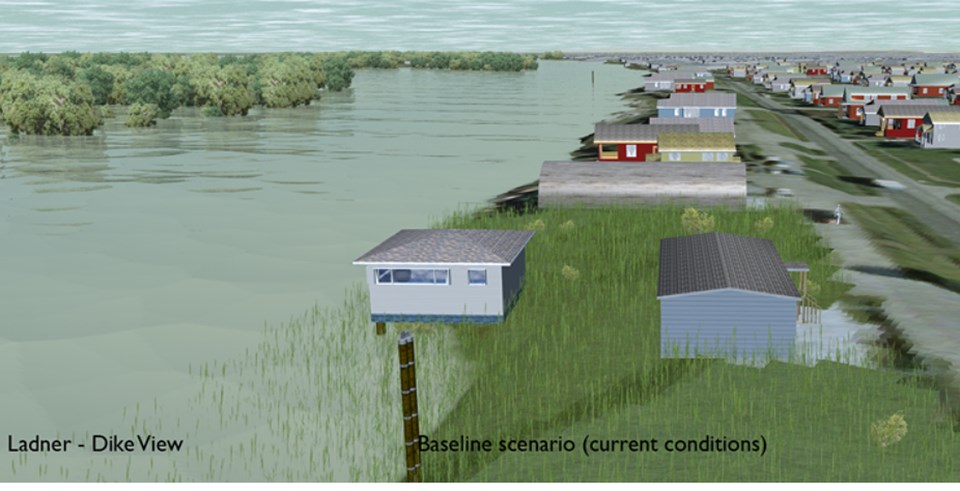The recent flooding in the region should reinforce to government the need for an overall plan to upgrade dikes across Metro Vancouver and the Fraser Valley.
That was the message from Mayor George Harvie during a recent virtual town hall meeting, warning communities including Delta, face increasing risk due to climate change.
Cities in the region are left in a position where they have to compete with each other for funding, when instead a high-level, totally encompassing plan is required to upgrade all dikes, he said.
It’s especially important for Delta as the community has more than 60 km of dikes.
Harvie also noted he’ll continue to push for an overall regional plan next year.
A report this year by the Fraser Basin, outlining a draft Lower Mainland Flood Management Strategy, warned the economic losses from a significant flood are projected to range between $20-to-$30 billion.
The strategy focuses on the potential for a Fraser River flood that would most likely occur during the spring freshet as well as coastal flooding as a result of storm surges and high ocean water levels.
The hazard area for flooding extends across 31 Coast Salish First Nations communities, 26 municipalities and two regional districts. Delta and Richmond were identified as particularly vulnerable.
The strategy also draws on a number of previous studies including a flood vulnerability analysis, review of Lower Mainland dikes and advanced flood modelling, which have highlighted the increasing risk posed by climate change and the economic fallout from a rapidly developing floodplain area.
The Lower Mainland will faces $20-to-$30 billion in projected losses if multiple dike systems are unable to holdback floodwaters, given extensive development in flood hazard areas, the document states, adding that future growth projections indicate the region will increase by more than a million people by 2050, so the risk will increase.
“Land use decisions over the past century have placed considerable buildings, infrastructure, and populations in flood hazard areas. Impacts from a major flood could be wide-ranging and can extend beyond those areas, for example as a result of damage and disruption to critical infrastructure and essential services. Impacts from a smaller flood could still be devastating for a smaller community, including many First Nations communities. Although many Lower Mainland communities are situated behind flood protection infrastructure, all dikes pose a risk of failure during a major flood,” the report states.
The report goes on to note, “Over one-third of the farmland in the Lower Mainland lies in the Fraser River floodplain and may be vulnerable to flooding. Damage and disruption to agricultural lands would not only have a significant impact to the regional (and provincial) economy, it would have considerable implications for food security in the region.”
The FBC recommendations include establishing a new regional flood entity/organization mandated by the province to oversee the implementation of the strategy, as well as the establishment of a long-term stable funding program to support implementation of the strategy.
Delta's Flood Management Strategy identifies a number of locations for possible dike upgrading over the next decade.




